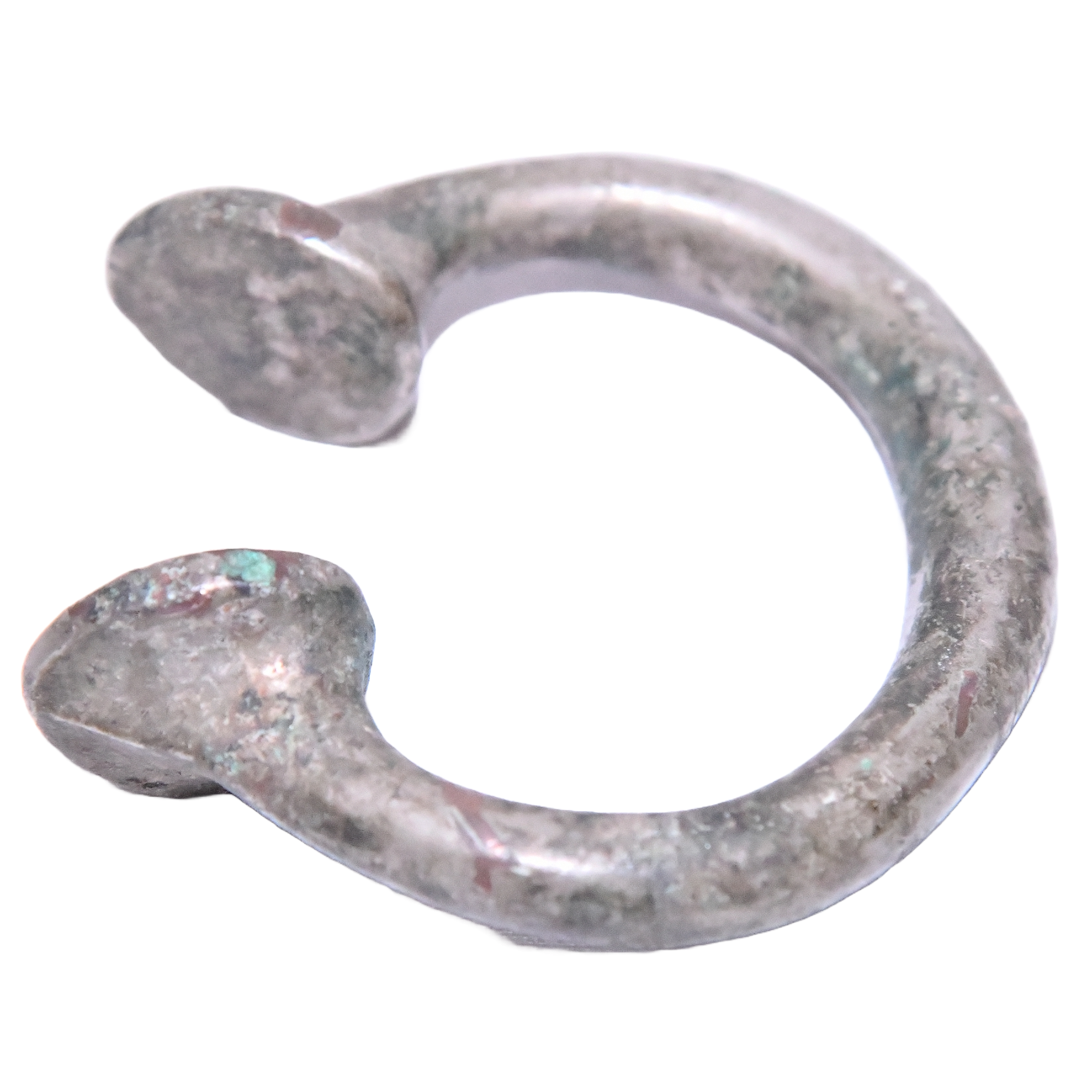West African Manila bracelet
Manila bracelet
Date: mid to late 19th century
Geography: west Africa
Dimensions: outer diameter 6cm L 6cm W 1.5cm D
Weight: 71g
Material: mixed alloy metal
Condition: some Verdigris due to oxidisation with the copper - see photos
The West African Manila bracelet, also known as "bracelet money," was a form of currency in pre-colonial West Africa and a sign of wealth and social status. Originating from the Benin Empire in the 15th century, Manila bracelets were widely traded including in areas that are now Nigeria and Ghana. Their value was not only monetary but also cultural, often associated with spirituality and ancestral connections.
Manila bracelet
Date: mid to late 19th century
Geography: west Africa
Dimensions: outer diameter 6cm L 6cm W 1.5cm D
Weight: 71g
Material: mixed alloy metal
Condition: some Verdigris due to oxidisation with the copper - see photos
The West African Manila bracelet, also known as "bracelet money," was a form of currency in pre-colonial West Africa and a sign of wealth and social status. Originating from the Benin Empire in the 15th century, Manila bracelets were widely traded including in areas that are now Nigeria and Ghana. Their value was not only monetary but also cultural, often associated with spirituality and ancestral connections.
Manila bracelet
Date: mid to late 19th century
Geography: west Africa
Dimensions: outer diameter 6cm L 6cm W 1.5cm D
Weight: 71g
Material: mixed alloy metal
Condition: some Verdigris due to oxidisation with the copper - see photos
The West African Manila bracelet, also known as "bracelet money," was a form of currency in pre-colonial West Africa and a sign of wealth and social status. Originating from the Benin Empire in the 15th century, Manila bracelets were widely traded including in areas that are now Nigeria and Ghana. Their value was not only monetary but also cultural, often associated with spirituality and ancestral connections.





